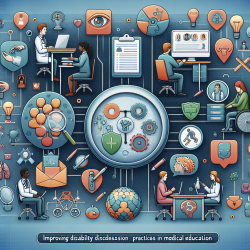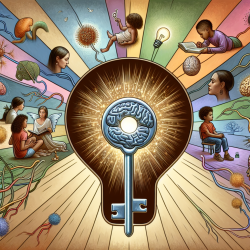Medical education aims to be inclusive, yet students with disabilities face significant structural barriers to disclosing their disabilities and requesting accommodations. The research article "Structural Barriers to Student Disability Disclosure in US-Allopathic Medical Schools" sheds light on these challenges and offers insights for improving practices in educational institutions. This blog will explore the key findings and practical recommendations from the study to help practitioners enhance their skills and encourage further research.
Key Findings from the Research
The study surveyed 98 of 141 eligible medical schools, revealing that 35% of these institutions do not align with the American Association of Medical Colleges (AAMC) recommendations for disability disclosure structures. The research identified several barriers:
- Conflicts of interest in the disclosure process
- Lack of specialized knowledge about clinical accommodations among Disability Resource Professionals (DRPs)
- Structural non-alignment with AAMC considerations
These barriers contribute to a significant gap between the number of students who self-identify as having a disability and those who formally disclose and request accommodations.
Recommendations for Practitioners
To address these issues, practitioners can implement the following recommendations derived from the research:
1. Establish Specialized Disability Resource Professionals (DRPs)
Assign a DRP with specialized training in disability services and disability law for the medical school. This professional should have a designated liaison in the medical school at the assistant or associate dean level to serve as a source of information and referral.
2. Avoid Conflicts of Interest
Ensure that the DRP is not supervised by someone in an evaluative role over students with disabilities. This separation helps to maintain objectivity and trust in the accommodation process.
3. Enhance Knowledge and Training
Provide ongoing professional development and training for DRPs to ensure they are well-versed in medical education curriculum, clinical accommodations, and relevant disability laws. This expertise is crucial for making informed decisions that support students effectively.
4. Foster a Supportive Environment
Create an inclusive and supportive environment that encourages students to disclose their disabilities without fear of bias or stigma. This can be achieved through awareness campaigns, confidential support systems, and clear communication about the benefits of disclosure.
Encouraging Further Research
While the study provides valuable insights, further research is needed to understand the nuances of disability disclosure in medical education. Future studies should focus on:
- Investigating the impact of structural barriers on student performance and graduation rates
- Gathering qualitative data from students to understand their perspectives on disclosure
- Exploring the relationship between institutional characteristics and disability disclosure practices
Conclusion
Improving disability disclosure practices in medical education requires a concerted effort to dismantle structural barriers and create a supportive environment for students with disabilities. By implementing the recommendations from the research, practitioners can enhance their skills and contribute to a more inclusive educational landscape.To read the original research paper, please follow this link:
Structural Barriers to Student Disability Disclosure in US-Allopathic Medical Schools.










